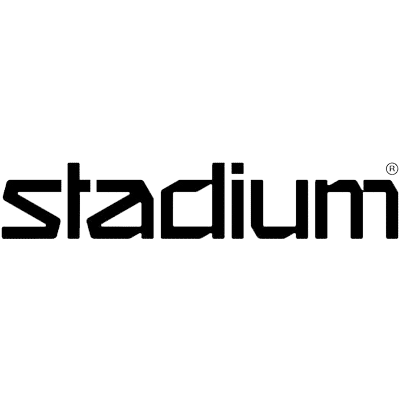Setting targets when you start using Google Ads
Before you read the blog, click on the video below to know about our upcoming webinar for ecommerce entrepreneurs.
Setting targets when you start using Google Ads
Any and all business endeavors need a back-up plan plan and proper allocation of budget.
And when you embark on the Google Ads path to grow your business, setting targets on how much to spend, and how much to withhold is something you can determine once you play around on this platform a little bit.The Sea of Google Ads is vast. Rough waters always predicate calm tides; and you would require an analytical bend of mind to set a smooth course of navigation to brave the complexities of a successful ROI (return on investment)
But just like with Tristan from ‘Stardust’, the road to hell is paved with good intentions. And while seemingly tricky at first, the end result is nothing short of true amazement!
Let’s test those waters then...
.gif?width=415&name=giphy%20(24).gif)
Have Reasonable Expectations
This acronym for ‘SMART’ goals is something you should keep in mind while setting up your budget.
(S)pecific(M)easurable
(A)chievable
(R)ealistic
(T)ime-bound
Have a reasonable time frame of when you should start seeing profits. Give it three to four months. It will take time depending on your product, but remember Google Ads ARE effective and very profitable!
These are some points you should consider in the beginning -
- What will happen after launching these campaigns?
- What will the potential sale look like?
- Do you just want score page views?
- Is it enough to just get brand awareness?
You have to plan ahead so your ad spends won’t slip away from your fingers.
.gif?width=317&name=giphy%20(30).gif)
Knowing what is successful in the beginning will keep you afloat and positive, so keep in mind that even a 1% click-through rate and 3 conversions are a very good start!
So let’s say your products have the same name as your website, nobody beats relevancy there cause the ads will match the landing pages.
Like if you’re selling jackets, and your website is called- alljackets.com and each product is a jacket then there is a close co-relation maintained within the ads, which will give you a good chance of having the return of investment needed for your business.
You need to be patient and decide that what’s going on is good enough, and that can be influenced by your KPI’s.
The Key Performance Indicators are the building blocks of how you monitor your progress.
So do you have the latest GPS for your KPI´s or are you sailing the seas and just watching the stars?

Maintaining set parameters ensures you don’t blow your budget to smithereens and do actually get a profitable ROI (return on investment)
-1.gif?width=343&name=giphy%20(18)-1.gif)
Display Advertising is great in the form of side banners and shows up all over the internet! A healthy click-through rate for this is 2-3%
It’s a strong sign that your ads are relevant.
Then there’s the mother of all inventions - DAN-DAN-DAN!
‘The quality score!’  The quality score is Google’s grading system of your relevancy.
The quality score is Google’s grading system of your relevancy.
What’s the probability that you will write the exact same text as your users? Well, with precise data, you’ll be right on the money!
Using the right 'product keywords' like AdHelp.io's tool uses, goes a long way in assisting your ad copies to stand out.
Here's even better news!
When you do start getting a good quality score, and click-through rates, then the cost-per-click lowers as well, cause everything else goes higher by default.
And that’s the scenario you’re aiming for a cause eventually when you stick it out with Google Ads, you spend less and get more.
And these are the cutting-edge tools of new age advertisers!
.gif?width=283&name=giphy%20(28).gif)
Contingency Plan
To gather data and see the profitability of your marketing campaigns, you will need to know how to bid and when to hedge your bets.
Would you brave your budget for the clicks? Consider the following factors -
– Return on ad spend
– Traffic volume
– Average cost per click
– Conversion rate
The average cost-per-click (CPC) is the average amount that Google will charge for each click. Google will then give an estimate of your expected monthly clicks and determine how much it will cost.
You can use this information to work out how you want to set your bids.
Tools like Google Keyword Planner are great for determining probabilities. With the Keyword Planner, you can select the keywords that could generate traffic.
The cost of your keywords depends on your market; some keywords can be crazy cheap while others are appallingly expensive!
So you’re better off laser focusing your attention on the return on your ads spend.
If you’re looking for some expert assistance create your free marketing plan on AdHelp.io. Then you can decide if you want to run it yourself or let AdHelp.io take care of Google Ads for you so you can focus on growing your business like a boss!
And make the boss-sauce! Y$$H! 😎
You can’t really complain when everything is as it should be!
.gif?width=353&name=giphy%20(31).gif)
What’s the Competition Upto?
Tools like SEMRush and SpyFu have been designed to shed light on what your competitors are currently bidding on, so you can strategize what you need to pay as well.
That’s some secret-agent style snooping. Not so secret though :P
That reminds me of a joke -
Daughter - ‘Dad, I want to become a secret service agent’
Father - ‘And by that admission alone, you’ll probably never qualify!’
Lol :P
But yeah, this will give you a fair idea of how much you need to be spending and what’s fair game in the market. Google Ads are for people who are interested in leaving behind a legacy and having their legacies leave behind an impact.
Join this weeks webinar on AdHelp.io and learn how to set your targets for Google Ads. If you want your products to shine in the digital space, then Google Ads are just the ticket!
Read more about how Google Ads is beneficial for ecommerce entrepreneurs.
.gif?width=245&name=giphy%20(25).gif)
.gif?width=360&name=giphy%20(26).gif)
Hope you liked the blog. Please check this video if you haven't already.
I’m very impressed by the impact that the data driven approach has on our customer acquisition growth and I look forward to continue developing this strategy with the Google Premium Partner.

Head of SEO/SEM at Advisa
With AdHelp.io we did not only see fantastic results, exceeding our very high expectations, but an agile way of working. AdHelp.io also impressed us with brilliant service and best in class technology. I couldn't be more happy with our collaboration.

Marketing manager Nordics - Let’s deal
We are a proud family company founded in 1949 called O&H Danish Bakery. As for many small companies today launching and growing successful online sales is tough and we didn't have the time to manage nor the competence to run Google Ads ourselves. AdHelp.io solved that for us and we manage to go from 0 orders per day to 50 orders per day within 4 months.

Family Owner, VP
I'm so proud to see what our marketing team in collaboration with AdHelp.io and Google has performed.

CEO Svenssons i Lammhult
What I really appreciate as an E-commerce manager, is AdHelp.io being very careful about how my marketing budget is spent. You don't go in and say let's double the spend. You go in and continuously experiment and find a smart way to scale with control of our return of Investment.

Head of Ecommerce Stadium
Join the fastest growing ecommerce companies
93 Million +
Performance updates done by AdHelp.io technology last year.
$1 Billion +
Revenue for AdHelp.io customers from paid search by 2022.
187
Countries that AdHelp.io customers advertise in.









